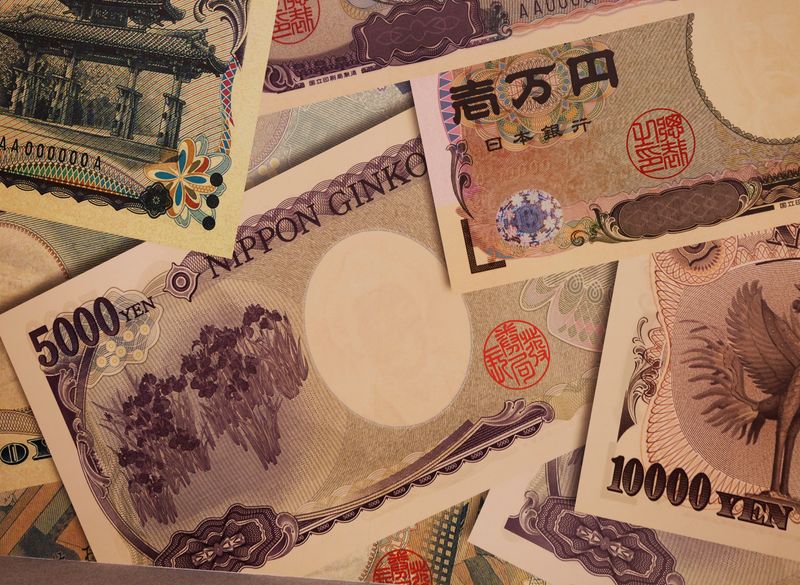
Satoshi Sugiyama and Leika Kihara
TOKYO (Reuters) – Japan may have to take action against any erratic, speculative currency movements, the government’s top currency diplomat Masato Kanda said on Tuesday, reiterating Tokyo’s readiness to intervene again to prop up the fragile yen.
In a sign of authorities’ alarm over the yen’s recent fall, Bank of Japan Governor Kazuo Ueda said the currency’s movement was one of the topics he discussed at a meeting with Prime Minister Fumio Kishida on Tuesday.
Kanda, Japan’s vice finance minister for international affairs who also oversees the country’s currency policy, said the government does not need to intervene as long as exchange rates move consistently to reflect fundamentals.
“However, when there is excessive fluctuation or erratic movements due to speculation, the market does not function and the government may have to take appropriate action. We will continue to maintain the same firm approach as before,” Kanda said.
Ueda also said the central bank would pursue monetary policy with a close eye on how a falling yen could affect inflation, suggesting currency movements could influence the pace and timing of future interest rate hikes.
“I mentioned that in general currency movements could have a potentially serious impact on the economy and prices, and therefore the Bank of Japan will carefully consider the recent fall in the yen in its policy,” Ueda told reporters after a meeting with Prime Minister Kishida.
While the weak yen is a boon for Japanese exporters, it has become a source of headaches for policymakers as it raises the cost of imports, increases inflation pressures and squeezes households.
remove advertising
.
Tokyo is believed to have intervened on at least two days last week to support the yen after it fell to lows last seen more than three decades ago.
Authorities spent more than 9 trillion yen ($58.4 billion) to defend the currency, helping lift the yen from a 34-year low of 160.245 per dollar to a roughly one-month high of 151.86 in a week, according to the Bank of Japan.
Tokyo is estimated to have spent about $60 billion during its latest foray into the market to support the yen in September and October 2022.
The yen, which has fallen nearly 9% against the dollar this year, was last trading around 154.50.
PRESSURE TECHNOLOGY
Japanese businesses have traditionally preferred a weak yen, given the country’s heavy dependence on exports. But now they are wondering whether the weak yen has become too good a thing.
“No matter what, the yen below 150 (against the US dollar) is too much,” Masakazu Tokura, chairman of the influential Keidanren business lobby, said at a regular press conference on Tuesday. If authorities intervened, the timing was “very good,” he added.
The relentless decline of the yen puts the Bank of Japan in a difficult position. The currency has been under pressure despite the Bank of Japan’s landmark decision to abandon negative interest rates in March, as rates in the United States rose while those in Japan remained near zero.
Those dynamics have sent cash out of the yen and into higher-yielding assets, with pressure increasing in recent months as expectations of a Federal Reserve rate cut recede.
remove advertising
.
Last month, Ueda hinted that the Bank of Japan could raise rates in several stages over the coming years, with an increase possible in the fall. But the hawkish signals were drowned out by markets focused on sell signals for the yen.
Raising rates too quickly could also harm Japan’s fragile economic recovery, a risk the governor highlighted even as the Bank of Japan phased out massive monetary support.
Many analysts expect the Bank of Japan to raise interest rates from current levels near zero sometime this year, although they are divided on how quickly borrowing costs could rise next.
($1 = 154.1800 yen)


